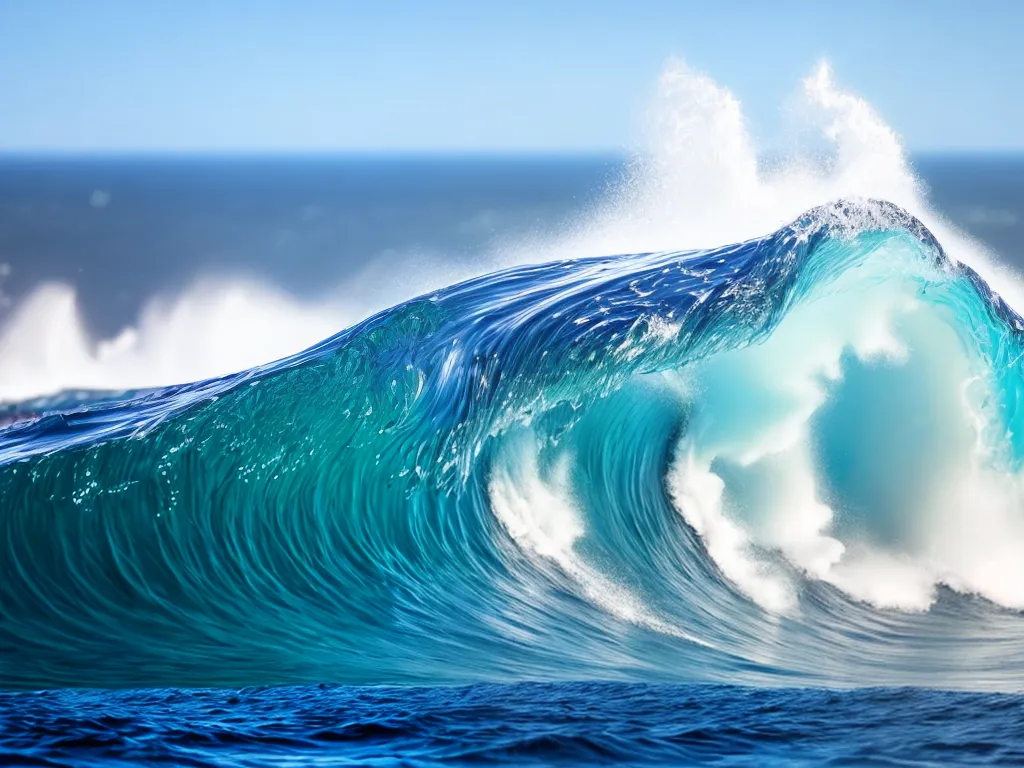
Introduction
I am excited about the potential for wave energy to become a major contributor to the world's supply of renewable energy. As an abundant and predictable resource, wave energy could play a key role in reducing greenhouse gas emissions and combating climate change. However, wave energy technology has struggled to reach commercial viability on a large scale. In this article, I will provide an in-depth look at how wave power works, its benefits, the current state of the industry, and the obstacles that must be overcome for it to realize its enormous potential. There are reasons to be hopeful about the future of wave energy, but there are also significant technical and economic hurdles that still need to be addressed.
How Wave Energy Works
The concept behind wave energy is simple - the up and down and side to side motion of ocean waves contains kinetic energy that can be captured and converted into electricity. There are several different techniques and technologies used to accomplish this:
Oscillating Water Column
This type consists of a partially submerged chamber that fills with water as waves pass through it. The wave action causes the column of water inside the chamber to rise and fall like a piston, forcing air through an opening and spinning a turbine.
Point Absorbers
These consist of floating buoys that move up and down with the waves. The kinetic energy drives hydraulic pumps that feed pressurized fluid to onshore generators.
Attenuators
These devices are long floating structures oriented parallel to the direction of the waves. The waves cause articulated joints between sections to flex and drive hydraulic pumps.
Overtopping Devices
These collect wave crests in a raised reservoir, then release the water back into the ocean through underlying turbines.
The Benefits of Wave Power
Harnessing energy from ocean waves has several major advantages over other renewable sources:
Abundant and Predictable Resource
-
The theoretical potential of wave energy is estimated at up to 3 TW globally - enough to supply a substantial portion of the world's energy demand.
-
Waves are more predictable and consistent than solar or wind energy.
Lower Visual Impact
- Wave energy devices can be located far offshore and are barely visible from land. This reduces visual pollution.
Reduced Wildlife Impact
- Properly sited wave farms have minimal impact on marine ecosystems compared to other energy sources.
Creates Jobs
- The nascent wave energy industry could create tens of thousands of domestic manufacturing and engineering jobs as it scales up.
Reduces Dependence on Fossil Fuels
- Increasing renewable energy from waves bolsters energy independence and security for coastal countries while lowering greenhouse gas emissions.
Current State of the Wave Energy Industry
The basic concept of harnessing energy from ocean waves dates back over 100 years, but the industry remains in the early stages of development and commercialization:
Very Little Installed Capacity
- Only ~30 MW of wave power capacity is installed worldwide as of 2022 - equivalent to just a few commercial wind turbines.
Handful of Companies
- Just over 100 companies are involved in developing wave energy technology. Many have struggled financially or gone bankrupt.
Cost Remains High
- The levelized cost of electricity (LCOE) from first generation wave power devices remains extremely high, often above $200/MWh compared to $40-60/MWh for wind and solar.
Few Grid Connections
- Aside from small pilot projects, very few wave power installations are connected to the grid and actually generating electricity.
Challenges Facing Wave Energy Scaling Up
Wave power technology clearly works in theory and small-scale demonstration projects, but has struggled to become commercially viable. Here are some of the main barriers:
Difficult Ocean Environment
- Corrosion from saltwater, large waves in storms, and biofouling from marine organisms degrade equipment and increase maintenance costs.
Growing Pains
- Like wind and solar, wave energy needs economies of scale and technical refinements before it can be cost-competitive. But these improvements require significant initial investment.
High Mooring and Transmission Costs
- Anchoring wave devices far offshore and transmitting the electricity to land is expensive with current technology.
Intermittency
- Wave power output can fluctuate significantly. Better forecasting and energy storage solutions are needed.
Government Policy
- More favorable renewable energy incentives, subsidies, and regulations from governments would accelerate development.
Pre-Commercial Stage
- Most wave energy devices remain in prototype stage. Moving to manufacturing at scale will require major capital investment.
Reasons for Optimism About the Future
Despite the challenges, there are promising signs that wave power may be on the verge of major progress:
Experience Curve
- As with wind and solar, costs should come down as technology matures and production scales up.
New Materials
- Advanced composites and polymers reduce corrosion and wear-and-tear for ocean devices.
Energy Storage
- New large-scale storage technologies create synergies with intermittent renewables like wave energy.
Offshore Wind Momentum
- Existing offshore wind infrastructure and vessels can be leveraged to also deploy wave energy at reduced cost.
Policy Support Growing
- Many governments have set ambitious renewable energy targets that provide incentives for wave power.
Private Investment
- Experience with offshore oil platforms provides expertise for offshore renewables. Major energy companies are investing more in wave technology.
Global Collaboration
- Knowledge sharing between companies, academia, and governments across countries enhances innovation and progress.
Conclusion
In summary, wave energy is an enormous sustainable power resource that remains largely untapped. The fundamental concept is proven, but reducing costs through technological refinement and scaling up production still requires substantial investment and effort. While meaningful challenges remain, the growth of offshore wind and energy storage, improving economics and materials, and increased policy support provide hope. If wave energy's vast potential could be harnessed more fully, it would significantly benefit the global fight against climate change. Thus, we must remain committed to nurturing this promising renewable energy industry.